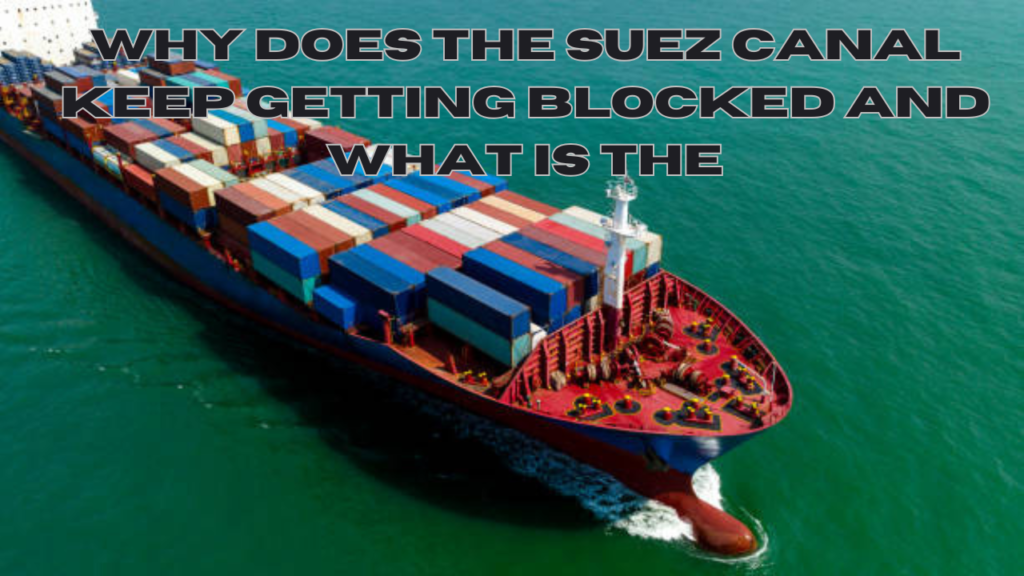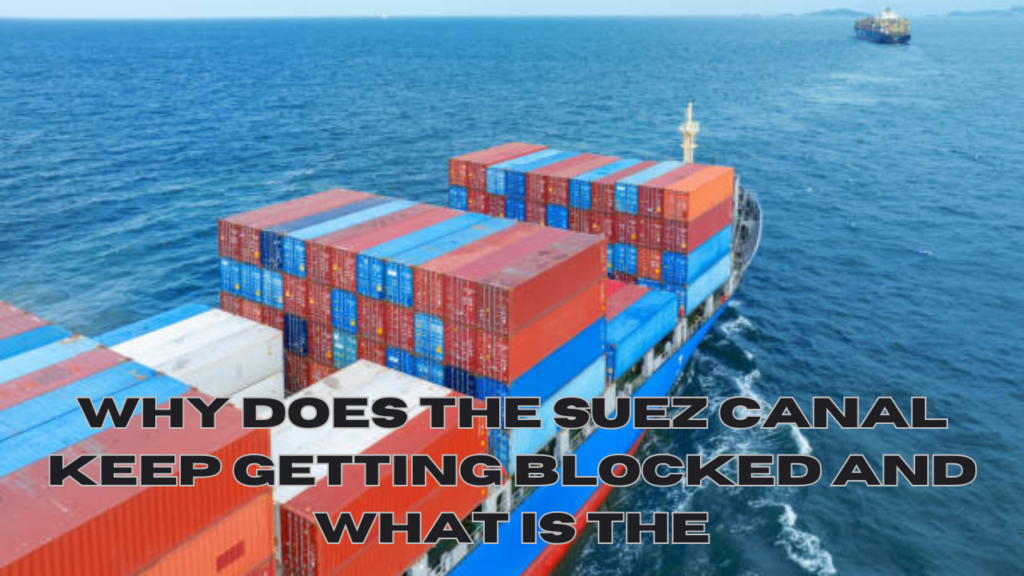The Suez Canal is one of the most critical waterways in the world, serving as a gateway for maritime trade between Europe, Asia, and beyond. Despite its significance, the canal has repeatedly faced blockages that disrupt global supply chains and trade routes. This article delves into the factors contributing to these blockages, the impacts they cause, and the measures being taken to mitigate future disruptions.
The Suez Canal: A Vital Yet Vulnerable Lifeline
The Suez Canal, which spans approximately 120 miles, connects the Mediterranean Sea to the Red Sea, significantly reducing travel time for ships that would otherwise navigate around the southern tip of Africa. This efficiency makes it a cornerstone of international trade, handling roughly 12% of global commerce. However, its strategic importance also underscores its vulnerabilities.
Reasons Behind Frequent Blockages
Narrow and Single-Lane Sections
One canal’s primary challenge is its design. Despite recent expansions, portions of the Suez Canal remain narrow, with single-lane segments. These confined spaces leave little room for maneuvering, especially for the massive vessels that dominate modern shipping.
Strong Winds and Natural Forces
The region around the Suez Canal is known for strong winds and shifting currents. These environmental factors can push large ships off course, increasing the risk of groundings or collisions. For instance, strong winds were a key factor in the 2021 Ever Given incident.
Human Error and Technical Failures
Errors in navigation or misjudgments by captains can also lead to blockages. Additionally, technical malfunctions such as engine failures or steering issues can cause vessels to lose control, compounding the risks within the cannibal’s confined spaces.
Increased Traffic and Larger Vessels
Global trade has surged in recent decades, increasing the number of ships using the Suez Canal. Simultaneously, the trend toward larger vessels has presented new challenges. These mega-ships, while economically advantageous, are more difficult to navigate and pose higher risks in narrow waterways.

The Consequences of Blockages
When the Suez Canal is blocked, the ramifications are felt worldwide. The 2021 Ever Given incident, which lasted nearly a week, caused massive disruptions:
- Delays in Supply Chains: Thousands of ships were delayed, holding up critical goods ranging from fuel to consumer products.
- Economic Losses: The blockage cost global trade billions of dollars daily, exacerbating shortages and increasing prices.
- Ripple Effects: Industries reliant on just-in-time delivery systems, such as automotive and manufacturing, faced significant setbacks.
Measures to Prevent Blockages
The Suez Canal Authority and global stakeholders have taken numerous steps to minimize the likelihood and impact of future blockages. Some of these measures include:
Widening and Deepening
Expansion projects are ongoing to widen and deepen the canal, particularly in high-risk areas. These improvements allow for safer navigation of larger vessels and reduce congestion.
Regular Dredging
Dredging operations are conducted frequently to maintain the cancanal’spth and remove sediments that could obstruct shipping lanes. This ensures that even during heavy use, the waterway remains navigable.
Advanced Navigation Technologies
Modern technologies such as satellite navigation, radar systems, and real-time monitoring tools are being employed to enhance the safety of ships traversing the canal. These technologies help captains and pilots make informed decisions.
Pilot Assistance and Traffic Management
Compulsory pilotage ensures that experienced professionals guide vessels through the canal, reducing the risk of human error. Strict traffic management protocols enhance safety, including convoy systems and speed regulations.
Challenges Moving Forward
While significant progress has been made, challenges remain. The increasing size of container ships continues to strain the capacity. Additionally, the unpredictability of weather and natural forces adds an element of risk that cannot be eliminated.

Also Read: A 529 Plan Can Help You Save More Than a Traditional Savings Account Because…
Final Reviews
The question of why does the Suez Canal keep getting blocked and what is the solution to this ongoing issue lies at the intersection of engineering, environmental factors, and global trade dynamics. While advancements in technology and infrastructure have mitigated some risks, the cancanal’s strategic importance ensures that any disruption will have far-reaching consequences. Continuous investment and innovation are essential to ensure this vital waterway remains a reliable artery of global commerce.











